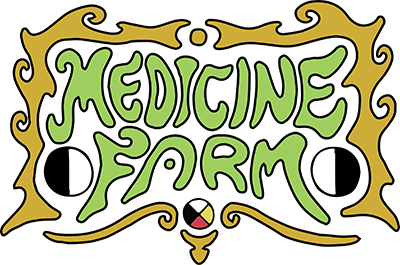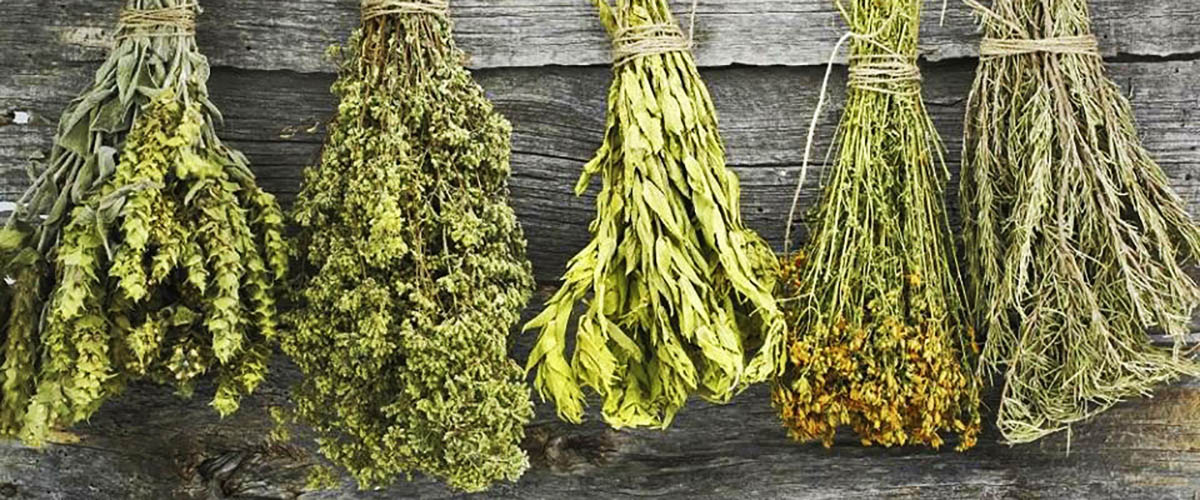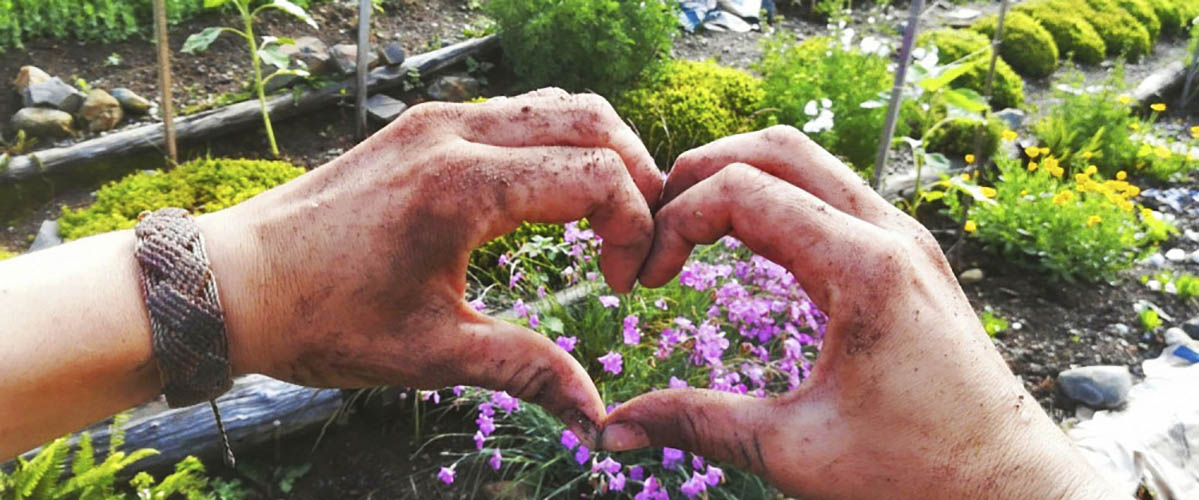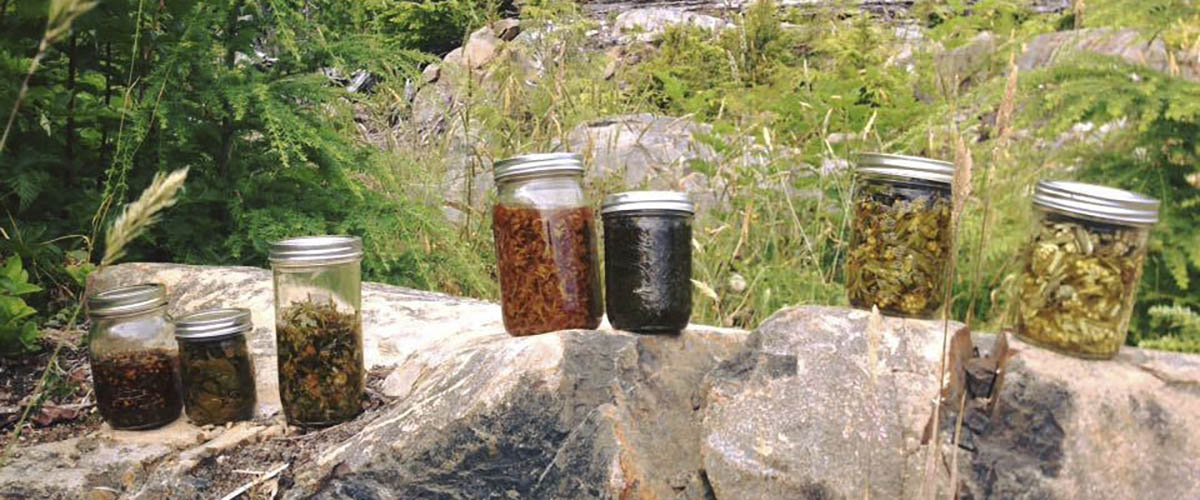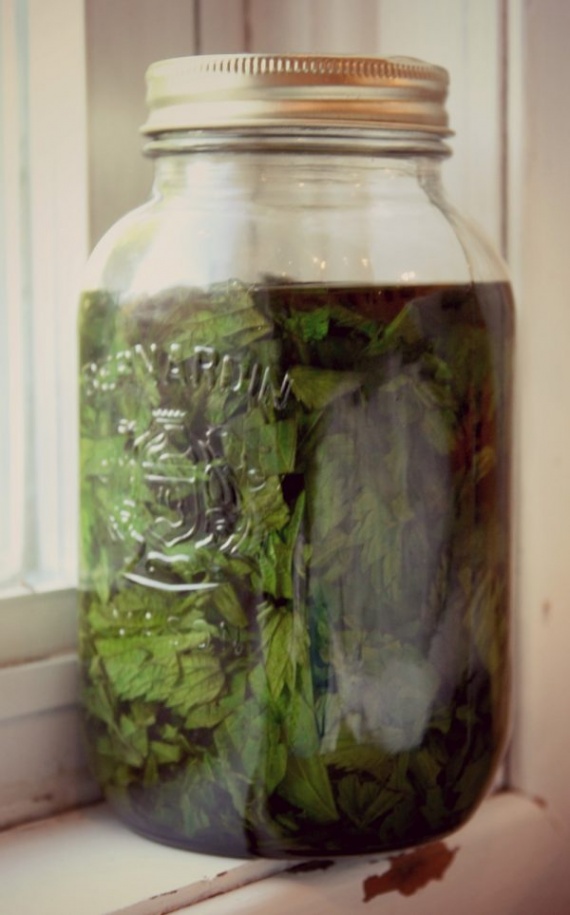Canada is home to a diversity of plants which have helped nourish and heal our people for thousands of years.
Herbal Medicine: it’s about understanding our interconnectedness with the natural world through the exploration of wild food and medicinal plants.
Healing with herbal medicine teaches us patience with ourselves by giving us the time to reflect on the imbalance of our body. As everything is interconnected, being able to cure the body and soul with the nature that you’re surrounded by is also part of the wholistic healing process. Making that connection, we feel and act respectively towards our land and the beings on it. They become like old friends. The food, mushrooms, herbs and trees that are all around us are medicinal.
Mother Nature is calling us to put our roots down to connect, simplify and embrace a symbiotic life.
Nature Heals!
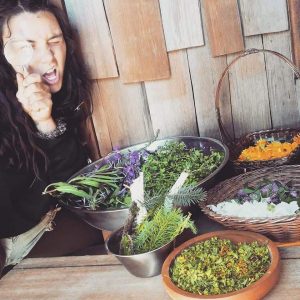
“We root in mother Earth; our flowers are the expressions of our joy, and our seeds blow in the wind when we share knowledge and ideas. The spirit of the Earth is calling us together to simplify, return to our roots, and live in a symbiotic relationship with nature.”
At the farm, we make many medicines ourselves: salves, ointments, teas, tinctures… Using plants wild-harvested or grown with love at Medicine Farm.
First, some quick rules for foraging medicinal plants
#1: Identification. Don’t use a plant if you aren’t 100% confidant that it is that plant. So if you are not sure about what is and isn’t a Dandelion, and if no amount of google images or foraging books are making it clear to you, please find a local foraging expert to help teach you.
#2: Clean Environment. Make sure you are foraging for plants in a place that hasn’t been sprayed with chemicals. If you aren’t foraging Dandelions on your own property, then really REALLY make sure that you have permission to get it where you found it and that it hasn’t been sprayed or near a roadside.
#3: Never take all of the plant. That’s how ecological systems can be ruined. Take some of each plant, but leave enough of the plant to allow it to continue to thrive.
Here, we will explain the infused oil process with the example of the dandelion flower.
It’s probably a safe assumption to say that almost all of us have dandelions in our yard. This is one of the most common “weeds” around. Sadly, dandelions are despised by most people and these poor plants get sprayed with all sorts of yucky chemicals. However, Dandelions deserve our respect and admiration! This is an amazing plant for us. The leaves, flowers, and roots of Dandelions are loaded with nutrients and natural remedy qualities that are very good for our bodies.
Why we are making a dandelion infused oil
Dandelion flowers act as a mild analgesic (a minor pain reliever), so it will be great in salves for sore tissues/joints.
The flowers help with dry and chapped skin, so it will be great to use in DIY lotions.
Dandelion has the potential to both detoxify and cleanse your clogged pores.
It is loaded with vitamin C, which can help speed up the healing process and help reduce scars and inflammation.
Dandelion flowers are known to ease the pain of sore muscles and arthritis.
Here, you can find some of our natural recipes: Depending on your needs, you can change the plant material, and you can also mix a few different herbs that work well together. Please research plants before using and mixing.
Directions for Dandelion infused Oil

